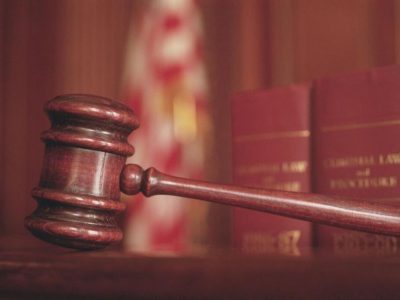
American doctors today are the beneficiaries of remarkable medical progress, driven by decades of world-leading research and computerized data analytics.
Thanks to these advancements, physicians can avail themselves of scientifically proven and optimized approaches for 95% of medical problems. When followed rigorously, these approaches give doctors the best chance at successfully solving a patient’s problem. This is referred to in healthcare as evidence-based medicine.
Research has shown that if every physician followed these algorithmic, science-based protocols every time, Americans would live healthier, longer lives and experience fewer complications from both acute and chronic disease.
Yet, all too often, doctors dismiss the data, preferring an outdated and unreliable approach to medical decision-making. This article, the fifth in a series called “Breaking The Rules Of Healthcare,” explores an unwritten rule, which doctors have followed for centuries.
For most of medical history, including much of the 20th century, doctors lacked the scientific knowhow needed to prevent and treat most life-threatening diseases. Because of this, they had little choice but to rely on their medical instincts and previous experiences when providing care.
Doctors today still proudly listen to their hearts and insist on following their guts, trusting that—despite the data—their intuition will produce the best results. More often than not, that old assumption is proven wrong.
The field of behavioral economics proves just how flawed human decision-making can be.
Let’s look at an example from the criminal justice system. Evidence-based sentencing (like evidence-based medicine) helps reduce the negative impact of human bias. Though EBS guidelines are not perfect, they lead to decreased recidivism, increased public safety and improved rehabilitation efforts. But despite the data, most judges continue to believe their individual judgement is superior.
In contrast to what people in dozens of disciplines think, a Nobel Prize-winning psychologist and economist Daniel Kahneman found that experts are not immune to “the influence of extraneous irrelevant information.” In fact, a series of studies about the judicial system found that when judges had the freedom to follow their “gut,” the harshness of sentencing varied wildly from judge to judge.
Not only that, but prison sentences also were swayed by illogical variables, including the time of day and the weather. Judges handed down worse penalties for defendants right before lunch when doctors were hungry (and lighter sentences after their bellies were full). Likewise, rainy days led to worse punishments than sunny days. Intuition isn’t always wrong, but it’s rarely a better substitute for science.
Doctors routinely misjudge the accuracy of their instincts and the relevance of past experiences with patients. These flaws in judgement lead to deficiencies in clinical quality and inconsistencies in treatment.
Take, for example, a famous study from the Oregon Research Institute as detailed in Michael Lewis’ book The Undoing Project.
Researchers gave radiologists 96 X-rays of stomach ulcers and asked them to estimate the probability of cancer for each. Doctors had no idea there we duplicate studies in the pile. The results, according to the lead researcher, were “generally terrifying.” Not only did physicians contradict each other’s findings. They all contradicted themselves at least once.
For further proof of flawed intuition, consider antibiotic prescribing. Using the most up-to-date research, computer-based algorithms can define when and whether antibiotics are helpful or unnecessary for a patient. But rather than rigorously following the science, physicians inappropriately prescribe these medications between 30% and 50% of the time, putting patients at risk of a life-threatening drug reaction.
The personal preferences of doctors harm surgery patients, as well. Physicians often recommend surgery for lower back pain, despite numerous studies that indicate physical therapy alone is equally effective 90% of the time (and leads to far fewer complications).
Overall, research demonstrates that algorithms beat even the best doctors in nearly all areas: from predicting the life-expectancy of cancer patients to the length of time a patient will need to stay in the hospital to the susceptibility of babies to sudden infant death syndrome, and so on.
Ultimately, doctors who adhere to scientifically derived guidelines make better decisions than when they follow their gut feelings.
But this new rule doesn’t mean that every patient should receive the exact same medical care. Rather, it means variation in medical practice should reflect differences in the preferences of patients, not differences between doctors.
To practice the “art of medicine” effectively in the 21st century, doctors will need to listen to the values, fears and hopes of their patients—much more than they did in the past.
Here are two circumstances when physicians must apply the art of listening:
Deciding how much insulin to prescribe a patient with diabetes comes with major risks. There are risks to being too aggressive and overly cautious.
On the one hand, overshooting could lead to hypoglycemia. This might cause a person with diabetes to pass out and crash—a lethal risk when riding a bike or driving a car. On the other hand, looser management leads to excessively high blood-sugar levels, which could harm a person’s blood vessels and organs. This increases the odds a person will die early of heart disease—or suffer kidney failure or require amputation.
In this situation, there is no “correct” answer. No clinical algorithm is capable of deciding which is worse for a patient: a small chance of dying in the near future or a high probability of dying from disease complications down the road. Physicians can’t make that choice for patients, either. Instead, they need to have an in-depth conversation and find out what matters most to the individual.
Recent advances in medicine give doctors the ability to extend a patient’s life almost indefinitely. But at what point is it better to end a painful and futile intervention rather than take a chance on a small but highly unlikely chance at a cure?
What if the probability for a cure is 5%, 1% or one in 1 million? Does it matter if the person is 20 years old or 90? What if their child or grandchild is going to be married next month and all that matters is making it to the wedding?
People’s lives and personal preferences are filled with infinite permutations, which often render algorithms useless and physician preferences irrelevant. In these situations, the art of listening proves essential.
Most doctors today don’t have the time to engage in lengthy dialogues about their patients’ hopes, fears and values.
But with the help of computer-derived algorithms, teams of clinicians (including pharmacists and nurses) can do what only doctors could in the past. By relying on a team of healthcare professionals to solve straightforward problems, doctors can free up time to have difficult conversations with their patients.
Studies show that if all physicians strictly followed computer-based algorithms, deaths from heart attacks, strokes and cancer would diminish greatly. For this to become the norm, doctors must break the rule of the past and follow evidence-based approaches rigorously. And when there is no single best answer, physicians must value the uniqueness of their patients.











